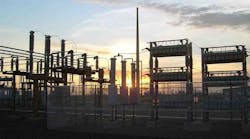Digital technology is a fascinating subject. We have spent many years digitizing nearly every aspect of the power delivery system, which resulted in our smart grid. We have been so successful that the industry is awash in data generated from all the sensors and monitoring systems, and now we have turned to digital technology to make sense of all the data it produced in the first place. One of the most promising data mining processes is found in today’s modern asset management systems. These systems sort through large data sets looking for patterns to turn the data into actionable information. These tools even allow the users to predict future trends, but the story doesn’t stop there. A lot of research and development is taking place in one exciting area of digital innovation for many industries and ours is one of them. Actually, it is something that would have been considered science fiction a few years ago: artificial intelligence (AI).
AI technology has been quietly making inroads in medicine, the aircraft industry, and nuclear generation, but now it is being applied to our industry. That got me thinking about AI technology and power electronics. Digital technology has played a major role in the advancements HVDC technology has achieved. Integrating AI made sense, so I started looking for information. It didn’t take long to find several interesting technical papers about research taking place in the area of classification and detection of HVDC faults using AI technology. Like other adaptations of AI, this one is focused on pattern recognition to identify disturbances in HVDC transmission schemes and do it quickly.
Fast fault identification has always been a challenge for control and protection schemes used with HVDC transmission because the present methods are affected by time-varying transients and by system noise. Unfortunately, as our power electronics schemes get more complex, fault identification gets more complicated and speed suffers. Identifying the cause of a disturbance has a direct bearing on control and protection schemes and influences how fast their action is keeping the HVDC transmission system safe. As a result, developers are thinking outside the box and are turning to AI technology to develop sophisticated tools needed for fast reaction. In today’s multifaceted HVDC schemes such as long HVDC transmission lines, mesh networks, and interregional overgrids, that is getting more difficult.
For years subjects like these have been the fodder for informal discussions for my friends and colleagues at the IEEE-PES general meetings. We would gather between technical meetings for a cup of coffee and talk about the direction HVDC technology was heading. The talks were never dull as my associates would kick about ideas or discuss their pet projects, but the discussions were mostly theoretical in nature because of technical limitations of the equipment. That all changed with technological advancements such as voltage source converters (VSC) and hybrid HVDC power circuit breakers. In the past few years I have noticed the discussion shifting from theoretical to tangible.
Someone might bring up their work with offshore wind farms, which would lead one of the group members to talk about research they were involved with in HVDC mesh networks. Someone else might talk about studies they were doing with linking HVDC overgrids to the AC backbone transmission grid in Europe. Now work is taking place on modeling multi-terminal HVDC systems using VSCs and DC breakers. HVDC mesh networks and overgrids using DC hubs are game changers much like the thyristor was many years ago.
The technology VSCs and hybrid circuit breakers offer to HVDC transmission is exciting. They can bring the ability to create DC hubs (switching stations), but DC hubs also bring other issues such as the need for fast protection schemes, power flow controllers, and automatic network restoration. That is where AI technology can prove to be very helpful. HVDC schemes using the DC hub concept will be faced with the same big-data issues found in smart grid AC transmission systems along with the issues of fast decision making for fault protection. Since AI technology has proven to be a valuable asset in several other industries, it should have no problem fitting into power electronics, which is why these reports of AI research in HVDC schemes are so electrifying.


